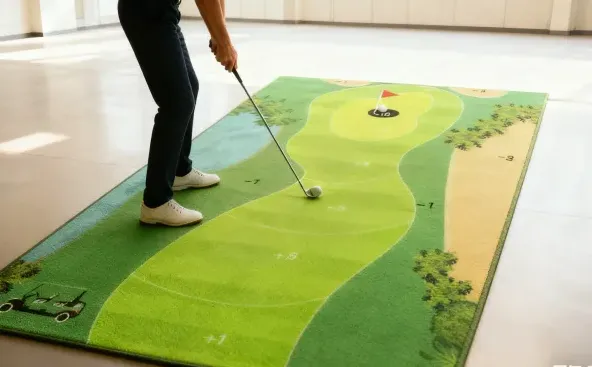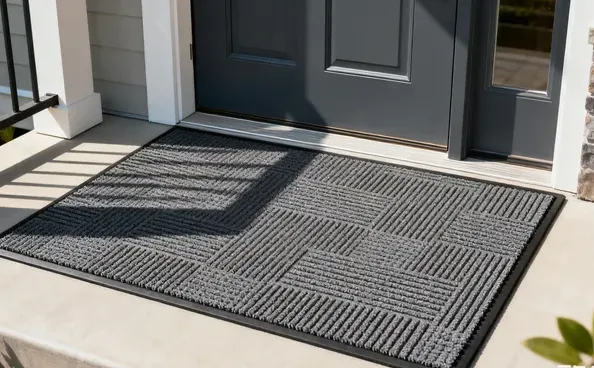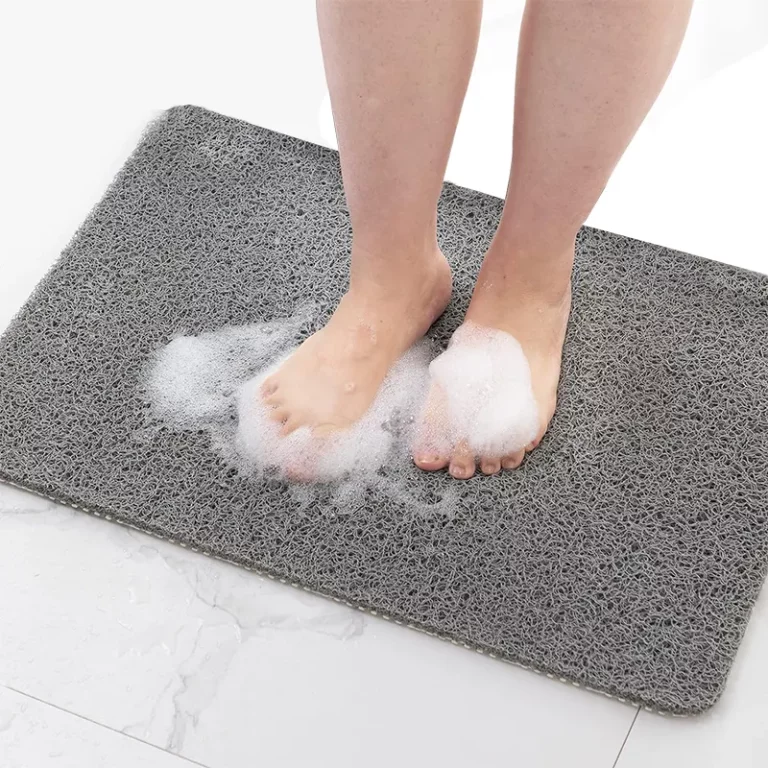I remember stepping on tiny bits of litter scattered around my home. It felt gritty, uncomfortable, and gave me extra cleaning tasks. I hoped a special litter mat would help.
A well-chosen litter mat can trap stray litter, keep floors cleaner, and minimize daily sweeping. It needs a textured surface, a strong backing, and easy maintenance. The right mat can capture most granules, leaving your space fresher and tidier.
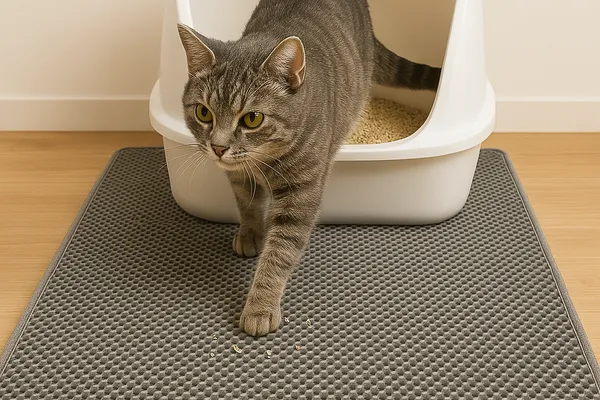
I discovered how convenient a reliable litter mat can be. Let’s explore the most pressing questions about choosing, using, and cleaning a mat that truly works.
What is the best litter mat?
I struggled with flimsy mats that barely clung to stray litter. They slid around, making the mess worse. I craved a sturdy mat that actually trapped debris.
A top-tier litter mat features a textured top layer1 to dislodge litter from paws. It also has a waterproof or non-slip underside, so it stays put while resisting moisture or spills.
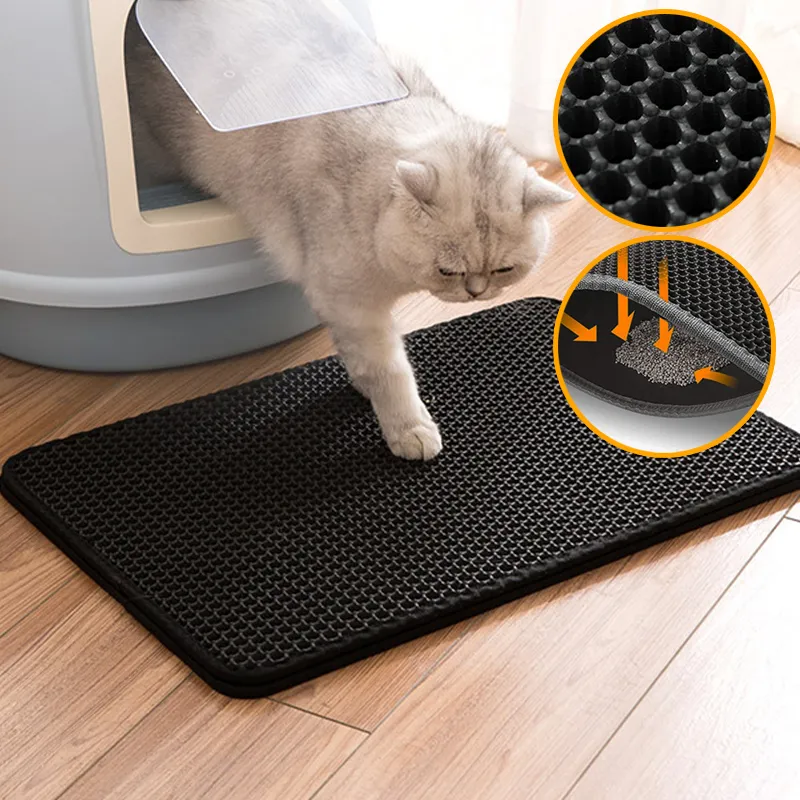
Identifying the Best Litter Mat
Deciding on the best litter mat comes down to your cat’s habits, your home layout, and your tolerance for daily cleanup. Some cats fling litter more aggressively than others. Some mats excel at trapping fine grains, while others are better for large pellets. Below are key considerations:
1. Texture and Grip
A mat with raised ridges or a mesh design scrapes off litter clinging to paws. Dual-layer mats feature holes on top where granules fall into a lower compartment. Those can be emptied and reused. If your cat is sensitive to certain textures, opt for a smoother approach, like soft PVC loops or rubber with gentle bumps.
2. Durability and Materials
- Rubber or PVC: These hold up well against frequent scratching. They’re also easy to rinse.
- EVA or Foam: Soft underfoot, but can tear if your cat tends to claw aggressively.
- Sisal or Fabric: Might suit less rowdy cats. Tends to be machine-washable, though might not last as long with repeated rough use.
3. Size and Coverage
Ensure the mat is wide enough for your cat’s typical exit path from the litter box. Some mats come in large rectangular shapes that can be placed partly under the box, capturing any litter that flies. Smaller mats might be cheaper or fit tight corners, but they capture fewer errant granules.
4. Maintenance and Cleanup
The best mat for you is one you’ll actually clean. Some can be shaken outside or vacuumed; others need a quick rinse in the sink or tub. Dual-layer designs are easy to pour out. Aim for minimal fuss so you’ll keep it tidy.
5. Our Quick Reference Table
| Material | Key Benefit | Potential Drawback |
|---|---|---|
| PVC / Rubber | Tough, easy to rinse | Can feel stiff under paws |
| Dual-Layer EVA | Excellent litter trapping | Might be damaged by sharp claws |
| Chenille Fabric | Soft for paws, machine-wash | Wears faster with heavy digging |
Picking the best litter mat also depends on your cat’s preferences. Some cats avoid mats with strong chemical smells or harsh textures. If you notice your cat stepping around it, try a different material. My cat took to a dual-layer EVA mat because it felt stable and effectively caught those stray grains.
Why does my cat pee on the litter mat?
I once found a wet spot on the mat instead of inside the box. It baffled me, and I worried something was wrong with my cat.
Sometimes cats pee on the mat if they dislike the box’s cleanliness, shape, or location. They might also mark territory or associate the mat’s texture with a soft, alternative spot to relieve themselves.
Uncovering Reasons Cats Pee on the Mat
When your cat pees on a litter mat, it can be confusing and frustrating. Let’s break down the main reasons to help you find a solution:
1. Box Cleanliness and Arrangement
Cats are meticulous about cleanliness. If the litter box is not scooped often or it smells too strong, a cat might seek a nearby surface that feels more appealing—like the mat. Similarly, if the box is too small or the sides are too high, your cat may prefer the area just outside.
2. Stress or Territorial Marking2
Some cats mark territory by spraying urine, especially when anxious or sensing the presence of other cats. If your cat is stressed, the mat could become a new “target.” This behavior might ramp up if you introduce a new pet or rearrange furniture.
3. Association with Soft Surfaces
If the mat’s texture is more fabric-like or soft (like chenille or foam), your cat might mistake it for a more comfortable bathroom spot. In some cases, cats that have previously peed on rugs or towels might generalize any similar texture.
4. Health Concerns
Before assuming behavioral issues, rule out medical problems. Urinary tract infections, kidney disease, or bladder stones can lead to inappropriate elimination. A checkup with a vet ensures you address potential health risks.
5. Odor Traces
If your cat peed once on the mat and it wasn’t thoroughly cleaned, residual scents can lure them to pee again. Using enzymatic cleaners that break down urine molecules helps remove the smell fully.
(A Handy Tip)
If you see repeated mat-peeing, relocate the mat temporarily. Try placing it a bit farther from the box entrance. Ensure you keep the box itself spotless, and watch if your cat’s behavior changes.
Understanding why your cat chooses to pee on the mat is the first step in correcting the habit. For many, the fix is as simple as increasing scooping frequency or adjusting box configuration. For others, addressing stress or medical factors is key. Patience goes a long way, and consistent, positive reinforcement helps retrain your cat to use the box properly.
Can a cat litter mat be washed?
I used to shake my litter mat outside, which helped, but it still felt grimy over time. I wondered if a proper wash was safe.
Yes, most litter mats can be washed. Many rubber or PVC mats can be rinsed with mild soap and water. Some fabric mats are even machine-washable. Check the label or instructions first.
[^1] placeholder](https://jccarpetsfactory.com/wp-content/uploads/2025/04/1743556672738111-09_17_05.webp)
Maintaining a Clean Litter Mat
A clean mat traps more litter and carries fewer odors. Over time, though, dust, hair, and scattered granules build up. Washing the mat extends its lifespan. Let’s look at the best ways to handle different materials:
1. Identify the Material
- Caucho o PVC: Generally safe for rinsing with a hose or scrubbing in the sink. They dry quickly if hung up.
- EVA Foam: Softer, dual-layer mats often handle light washing, but avoid scrubbing too hard to prevent tears.
- Fabric or Chenille: Some are labeled “machine washable.” Others need gentle hand washing.
2. Steps to Washing
-
Shake or Vacuum First
Remove as much loose litter as possible. Shaking outside or vacuuming is essential so you don’t clog your drains or washing machine. -
Spot Treat Stains
If there’s an obvious stain or residue, apply a mild detergent or enzyme cleaner. Let it sit briefly to break down any stuck debris. -
Wash According to Instructions
- Hose Down: Rubber or PVC mats can handle a strong jet of water.
- Sink or Tub Soak: For medium-sized mats, fill the tub with warm water and mild soap. Gently agitate.
- Machine Wash (if allowed): Use a gentle cycle, cold or warm water, and mild detergent. Avoid bleach or harsh chemicals that might remain on the mat.
-
Rinse Thoroughly
Any soap residue can irritate cats or attract more dirt. Rinse until water runs clear. -
Secar completamente
Air drying is best. Fabric mats can sometimes go into a low-heat dryer, but high heat might warp rubber or foam.
3. Frequency of Cleaning
Aim for a deeper wash every two to four weeks, depending on how messy your cat’s habits are. Quick daily shakes keep buildup minimal.
Table: Washing Methods by Mat Type
| Mat Type | Washing Method | Dry Time | Notes |
|---|---|---|---|
| Rubber/PVC | Hose or sink wash | Fast (hang dry) | Scrub gently if textured |
| Espuma EVA | Gentle rinse or soak | Moderado | Avoid harsh brushes |
| Fabric/Chenille | Machine-wash (if allowed) or soak | Varies (air or low-heat) | Check label for instructions |
By washing your cat litter mat regularly, you cut down on odors and keep the environment fresher for both you and your pet. Maintenance also ensures the mat continues to catch stray litter effectively. I found that once I got into a routine of monthly washes, the mat not only looked better but also made the entire litter corner smell cleaner.
How to clean cat pee off of litter mat?
I panicked the first time I found cat pee3 on the mat. I worried the smell would never come out. I knew I needed a thorough cleaning method.
Use an enzymatic cleaner or diluted vinegar solution to break down urine molecules. Soak the affected spot, let it sit, then rinse or wash as directed. Ensure full odor removal to prevent re-marking.
Steps to Eliminate Cat Pee Odor
Cat pee can cling to surfaces with a persistent smell. A typical soapy rinse might mask odors temporarily but won’t always remove them. Following a specific process can rescue your mat from permanent stench:
1. Blot Excess Urine
Right after discovering the spot, dab it with paper towels or a cloth to absorb as much moisture as possible. Avoid rubbing, which can push urine deeper into the mat’s fibers or pores.
2. Apply an Enzymatic Cleaner
Enzymatic cleaners use bacteria or enzymes to break down urine’s uric acid crystals. This is crucial because standard soaps might remove surface stains but leave behind smelly residues that prompt your cat to pee there again. Saturate the spot thoroughly and let it rest for the time specified on the cleaner’s label.
3. Rinse or Wash
Depending on your mat type, rinse in the sink, tub, or a washing machine (if allowed). Make sure all cleaner residue is gone. If any odor remains, repeat the enzymatic treatment. With cat pee, sometimes a second round is needed for stubborn scents.
4. Air Dry Completely
Dampness can trap odor. I usually hang my mat outside or lean it near a breezy window. If your mat is machine-washable, a low-heat cycle might help. Just double-check you’re not damaging the backing.
5. Future Prevention
- Frequent Checks: Inspect the litter area regularly. Quick action on fresh accidents is easier than dealing with set-in smells.
- Calming Measures: If your cat is peeing outside the box frequently, consider stress reducers or additional boxes to encourage proper habits.
(Extra Tip)
Sprinkle a light dusting of baking soda on the mat after cleaning and drying. Let it sit for a short while, then shake or vacuum. Baking soda can neutralize any lingering traces of odor that even enzymatic cleaners may not fully eradicate.
With patience and the right tools, you can rescue a mat from cat pee mishaps. Thorough cleaning saves you from constant re-marking and ensures your cat’s environment stays fresh. Over time, you’ll get a feel for your cat’s patterns and catch accidents quickly, minimizing deeper cleaning sessions.
Conclusión
A well-chosen litter mat can indeed work wonders. With durable materials, a good cleaning routine, and quick action on occasional messes, you’ll enjoy a tidier home and a happier cat.
-
Learn how a textured top layer can enhance litter trapping and improve your cat’s experience with the mat. ↩
-
This link will provide insights on reducing cat stress, which is crucial for preventing unwanted behaviors like marking. ↩
-
Learn about various techniques and products to effectively clean cat pee, ensuring your home remains odor-free and comfortable for both you and your cat. ↩


